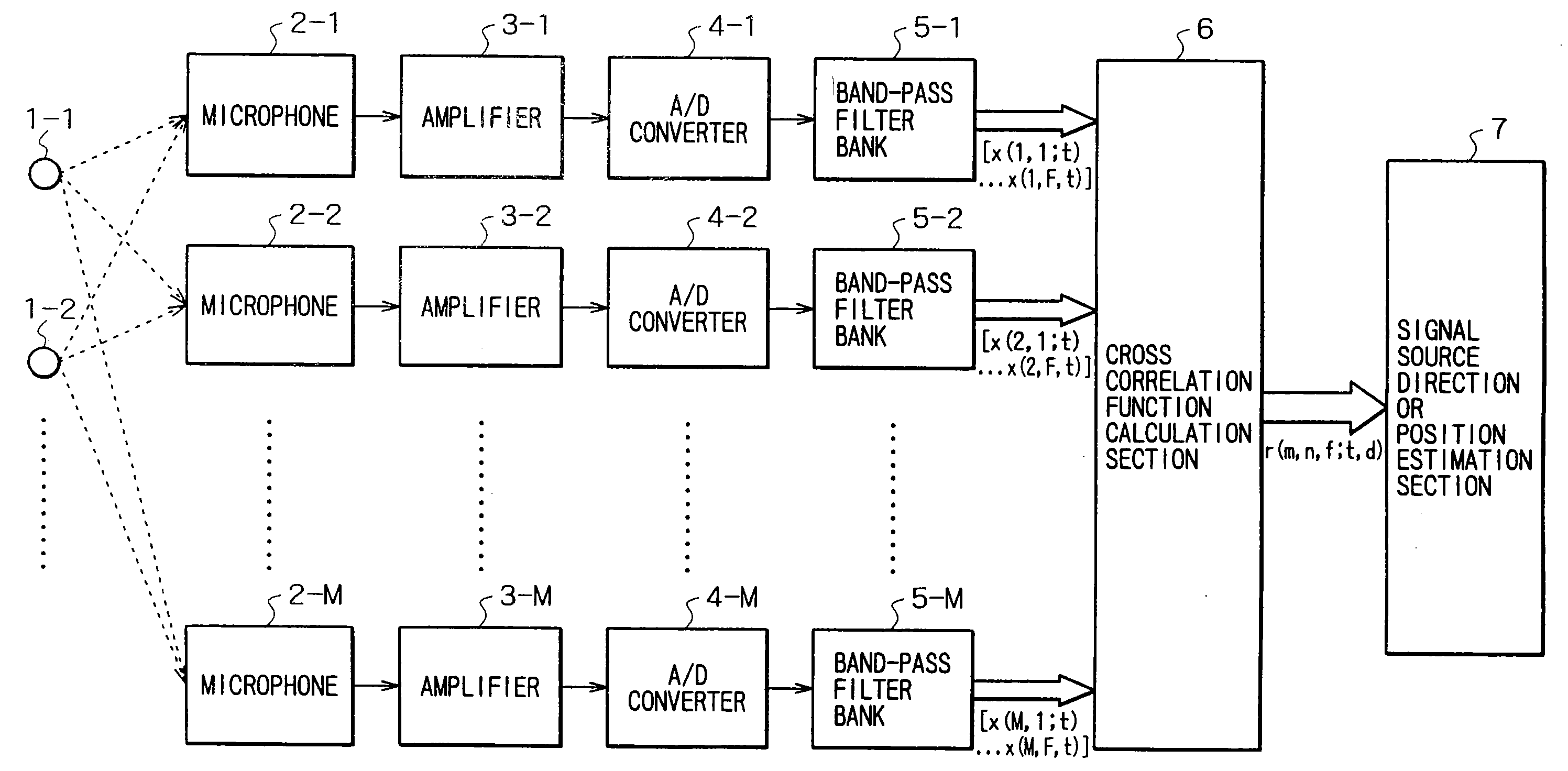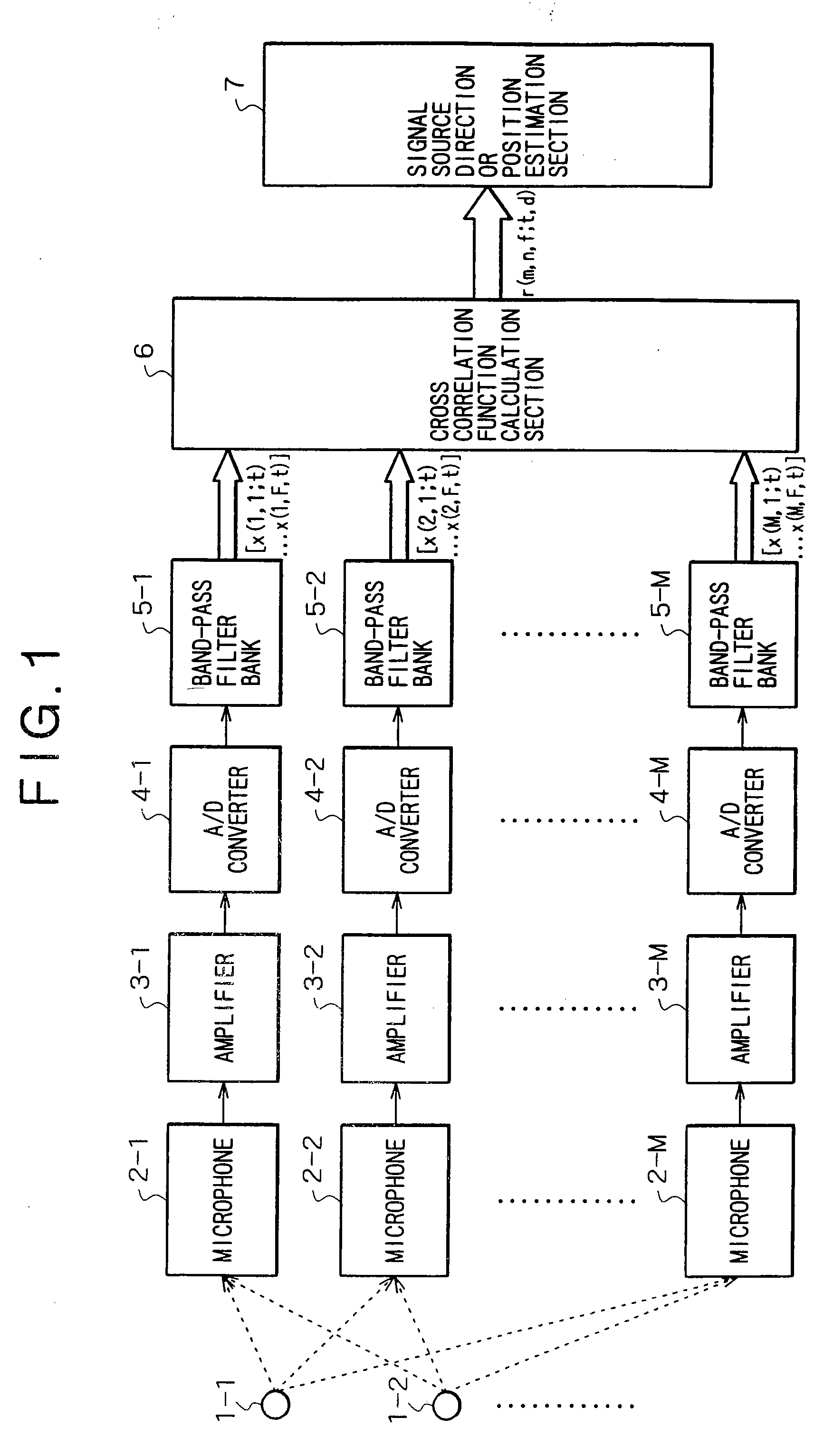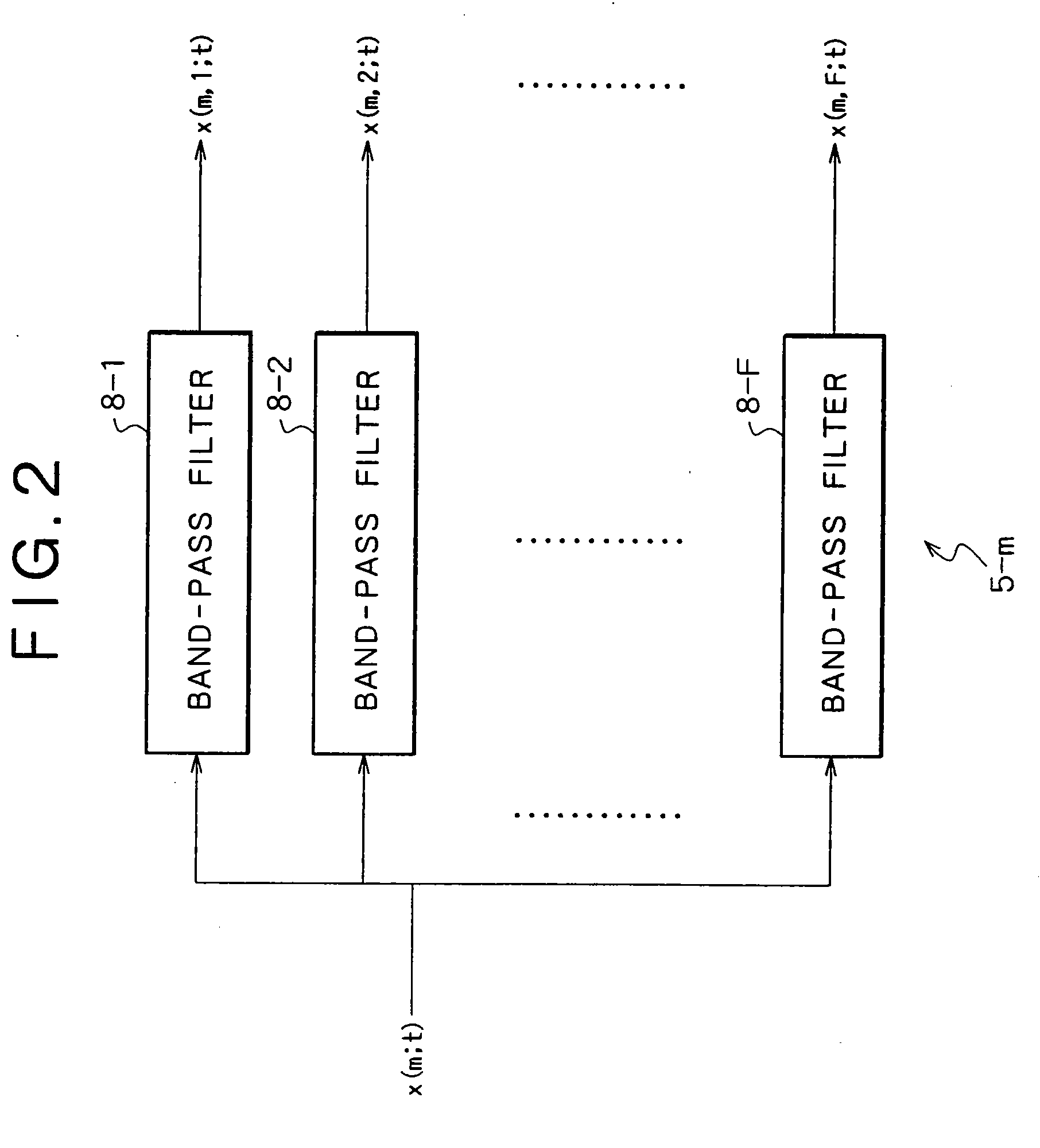Signal Processing Apparatus and Signal Processing Method
a signal processing and signal processing technology, applied in the direction of two-way working systems, instruments, television conference systems, etc., can solve the problems of whitening process, loss of unique characteristics of codes from the received signals, and inability to estimate the direction or directions or the position or positions of a signal source or sources insufficient ways, etc., to achieve the effect of superior signal emphasis
- Summary
- Abstract
- Description
- Claims
- Application Information
AI Technical Summary
Benefits of technology
Problems solved by technology
Method used
Image
Examples
first embodiment
[0081] Referring first to FIG. 1, there is shown a functional configuration of a signal processing apparatus to which the present invention is applied. The signal processing apparatus includes a plurality of (in the embodiment shown, M) reception systems composed of a plurality of (M) microphones 2-1, 2-2, . . . , 2-M for receiving a signal or signals generated from one or more signal sources 1-1, 1-2, . . . , M amplifiers 3-1, 3-2, . . . , 3-M for amplifying the received signals of the microphones 2-1, 2-2, . . . , 2-M, respectively, M A / D converters 4-1, 4-2, . . . , 4-M for converting the amplified signals from the amplifiers 3-1, 3-2, . . . , 3-M into digital signals, respectively, and M band-pass filter banks 5-1, 5-2, . . . , 5-M, respectively, a cross correlation function calculation section 6 for calculating cross correlation functions between frequency band signals for individual combinations of the reception systems for individual frequency bands, and a signal source direc...
second embodiment
[0132]FIG. 9 schematically shows a configuration of another signal processing apparatus to which the present invention is applied.
[0133] Referring to FIG. 9, the signal processing apparatus includes a plurality of (in the embodiment shown, M) reception systems composed of a plurality of (M) microphones 2-1, 2-2, . . . , 2-M for receiving a signal or signals generated from one or more signal sources 1-1, 1-2, . . . , M amplifiers 3-1, 3-2, . . . , 3-M for amplifying the received signals of the microphones 2-1, 2-2, . . . , 2-M, respectively, M A / D converters 4-1, 4-2, . . . , 4-M for converting the amplified signals from the amplifiers 3-1, 3-2, . . . , 3-M into digital signals, respectively, and M band-pass filter banks 5-1, 5-2, . . . , 5-M, respectively, a cross correlation function calculation section 6 for calculating cross correlation functions between frequency band signals for individual combinations of the reception systems for individual corresponding frequency bands, and ...
application example 1
[0172] Application of the signal source direction or position estimation apparatus to a TV conference system, a supervisory system:
[0173] By connecting an output of the signal source direction or position estimation apparatus including a plurality of microphones to a camera control apparatus (refer to FIG. 14), a camera can always be directed to a signal source. Or, where a plurality of cameras are connected to the camera control apparatus, the camera by which the output of the signal source direction or position estimation apparatus should be monitored may be changed over suitably. Or else, in response to position estimation of a signal source, a camera may be zoomed in toward the signal source.
PUM
 Login to View More
Login to View More Abstract
Description
Claims
Application Information
 Login to View More
Login to View More - R&D
- Intellectual Property
- Life Sciences
- Materials
- Tech Scout
- Unparalleled Data Quality
- Higher Quality Content
- 60% Fewer Hallucinations
Browse by: Latest US Patents, China's latest patents, Technical Efficacy Thesaurus, Application Domain, Technology Topic, Popular Technical Reports.
© 2025 PatSnap. All rights reserved.Legal|Privacy policy|Modern Slavery Act Transparency Statement|Sitemap|About US| Contact US: help@patsnap.com



